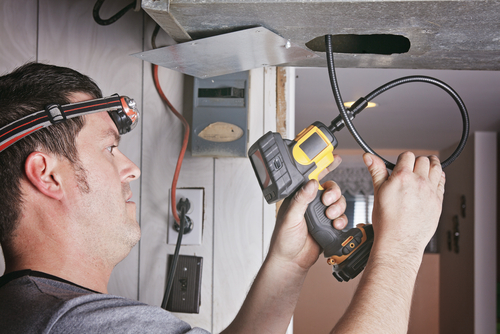Homeowners are aware that a great deal of energy is necessary to power heating, ventilation and air-con (HVAC) systems, especially once winter or summer electric and gas bills arrive. The truth is, as much as half of the vitality used in a living space goes towards hvac the indoor environment.
The intention associated with an HVAC system, when operating properly, is for a temperate climate and the absolute best air quality, delivered for and affordable price. Most homes today are featured with air conditioning and heating systems that maintain temperatures in all rooms of a house they service. 
Whether a home is new or older, the heating and air conditioning equipment must always be sized to properly fit the home. Proper equipment sizing depends upon your own home’s heat loss during cold weather and heat gains during warm weather, and is calculated using a design load formula. To find out whether an HVAC structure is the correct size, homeowners can do their very own calculations using software located at the website energystat.gov
A system that is correctly sixed will might turn out to be more cost-efficient than a massive unit. A unit that is too huge will constantly cycle on and off, raising energy costs. Undersized equipment, with airflow that’s insufficient, will shorten the efficiency no matter the air distribution and speed up wear on system components, resulting in inadequate room temperatures and equipment failure.
However, installing new equipment is not the reply when homeowners want to lower energy bills. Before an HVAC system needs to be replaced, it’s worth it to evaluate routine maintenance issues. One problem that may be remedied easily is stopping air leakage within the home or around air ducts. These leaks can be reasons for problems as opposed to the HVAC equipment itself. The homeowner or a contractor can seal ducts and pipes by using mastic or metal-backed tape, or maybe an aerosol-based sealer. Once any leaks happen to sealed, the machine could be checked for optimal air flow. When the air flows at proper levels, a house is comfortable and energy bills are usually more affordable. If air-flow is out of reach, duct leakage increases and of course the temperature on the register is not sufficient for optimal home comfort. If fresh air is just too low, air distribution efficiency drops and accelerates the wear on system components, causing discomfort as well as premature failure of equipment.
There are a number of systems that may be checked when trouble-shooting HVAC systems. Thermostat settings may be adjusted to ensure comfort levels are maintained when  relations are home and energy is conserved once they are away. Internal parts within the HVAC system may be lubricated for better operation and reduced electricity use. Evaporator and condenser air con coils could be cleaned and air con refrigerant levels might be checked and adjusted.
relations are home and energy is conserved once they are away. Internal parts within the HVAC system may be lubricated for better operation and reduced electricity use. Evaporator and condenser air con coils could be cleaned and air con refrigerant levels might be checked and adjusted.
Homeowners also can extend all the memories of our bodies by monitoring the filter maintenance by inspecting, cleaning or changing filters a minimum of once the three months. Filters should be alter monthly throughout the heavy-use summer and winter months. A dirty filter will decelerate air flow and create the internal system work overtime to keep members of the family warm or cool and that wastes energy. A new looking filter will even prevent residue from increase in the system that could result in expensive maintenance and/or early system failure. Routine maintenance can have a significant impact in the lifestyle and effectiveness relevant to an HVAC system , in addition to cost to maintain a cushty and happy home.
Seeking experts to unravel your air duct cleaning needs? Downey Carpet and Air Duct Cleaning realizes through collective experience that homeowners frequently tend to disregard critical aspects of their own house that want cleaning.
Call us at 562-367-4650 or email info@downeycarpetandairductcleaning.com

